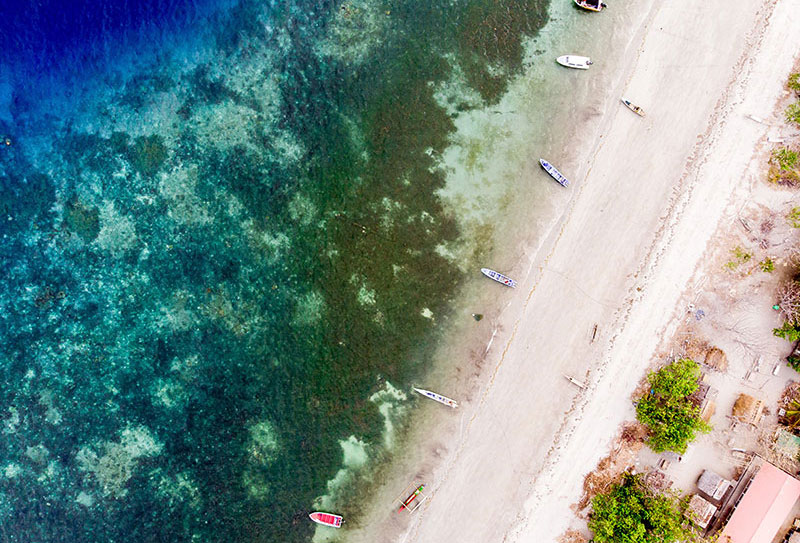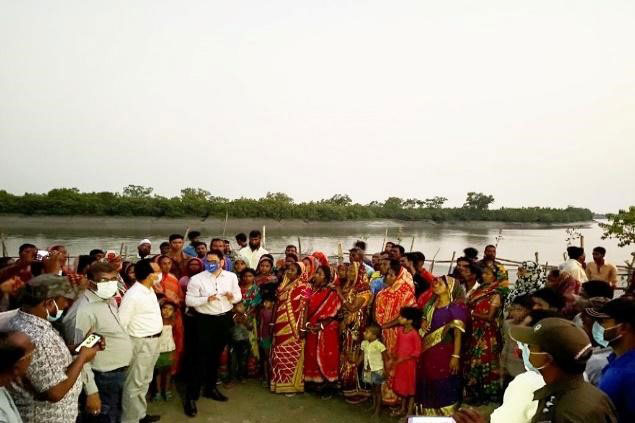Timor-Leste's Initial NAP outlines priority sectors and their implementation programs
Justina Aurea da Costa Belo
Professional Staff
National Ozone Unit, National Directorate for Climate Change,
General Directorate for the Environment, Secretary of State for the Environment
*The interview was conducted in June 2022.

What is the status of the development of the NAP and what is the schedule for the future?
We completed our NAP formulation in 2021 and submitted it to the UNFCCC (Timor-Leste's National Adaptation Plan: Addressing climate risks and building climate resilience). We are currently in the implementation stage. Our NAP identified seven priority areas (infrastructure, biodiversity and ecosystem, health, agriculture, water, disaster risk reduction (DRR), and tourism) and we set up implementation programmes tied to those areas. We then identified four gaps: lack of funding, lack of capacity, lack of accountable technology transfer, and lack of related guidelines. We also recognize that our NAP has not yet set up a monitoring and evaluation (M&E) framework, which is also a challenge for future improvement.
We are planning to update our NAP soon but at the same time we have prepared a parallel proposal for NAP implementation in order to increase our resilience. Some project ideas and project concept notes are also being developed to address adaptation priorities in the NAP. Moreover, we have also formulated a proposal to seek financial support from the GCF to update the NAP.
What information is being collected for the development and update of the NAP?
We make use of the UNFCCC website and UN4NAP events. We feel that information from other countries would be useful in formulating our own NAP. In particular, information on neighboring countries such as Indonesia, Australia, Fiji and other SIDs is helpful. As they are also LDCs, information on African countries was also helpful. Good practices in similar geographical, political and economic situations would be helpful, but in the end, each country's situation is very different, and NAPs will be very different. In addition, information that would be useful would be not only on the NAP itself, but also on how each country has coordinated among ministries and agencies in the process of formulating the NAP, as well as how the necessary funding was obtained. Information on each country's progress in developing national adaptation plans would also be helpful. Moreover, we have collected data and information on climate change vulnerability, climate change information, sectoral past experiences on climate change adaptation related projects, programs and activities, adaptation priorities and needs etc.
What kind of information is useful in developing the NAP of your country?
We recognize that the most recently formulated NAP is in its initial stage and needs to be improved. In particular, we believe that the current NAP needs to be updated with regard to vulnerability assessments, as it contains almost the same information that was published in the NDC.
The National Directorate of Climate Change (NDCC) in Timor-Leste still lacks personnel with the skills and knowledge of climate change adaptation. Capacity development training is needed because even the basic climate data cannot currently be handled within the country. We believe it is important to create an environment in which knowledge on climate data is firmly accumulated within the organization, so that it is not necessary to rely on experts from outside the country. Climate change vulnerability and climate data/information as well as sectoral adaptation priorities and needs are most useful for supporting the NAP formulation processes.

- ADAPTATION PLAN DEVELOPMENT PROCESS
- Whether you’re looking to update an adaptation plan or are intending to start on one, engaging in the adaptation planning process is important work. Once you identify where your country is located in the process, you will find useful information such as tools and good practices.

- NAP PROCESS UNDER THE UN FRAMEWORK
- Understand why adaptation planning is necessary in the long run to implement the Paris Agreement. Learn about the latest trends in international adaptation negotiations and support systems for NAP formulation under the UN bodies.

- Finance & Implementation
- Identify key points, good practices, and useful examples for financing both in the planning and implementation phases of adaptation.

- Monitoring & Evaluation
- Once adaptation measures are implemented, Monitoring and Evaluation (M&E) is conducted to track and evaluate the effectiveness of adaptation measures. Find useful resources including the latest discussions and good practices here.

